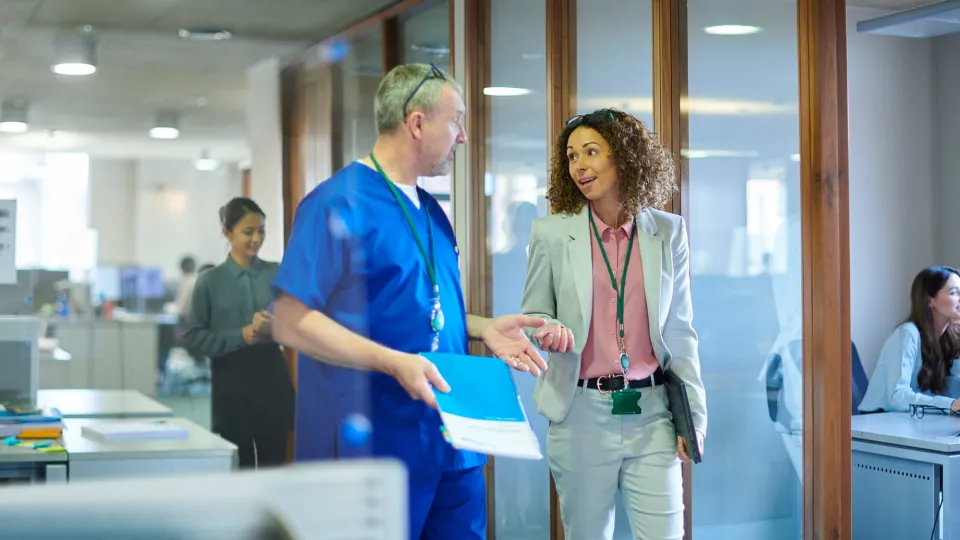The Significance of Medical Administration in Health Care Management
Wiki Article
Best Practices in Medical Management for Improving Performance and Minimizing Prices
In the ever-evolving landscape of healthcare, the pursuit of best methods in clinical management is extremely important for enhancing performance and curbing expenses. By integrating sophisticated innovations such as digital health and wellness records and telemedicine, doctor can enhance operations and improve patient care. Technology alone is not a remedy; enhancing resource allotment and cultivating collective communication among treatment teams are equally critical. As organizations strive to stabilize quality and expense, what methods should be focused on to attain these dual goals? The response to these questions hold the trick to a much more lasting health care system.Leveraging Advanced Technology
In today's quickly evolving healthcare landscape, leveraging innovative innovation is no much longer optional but necessary for efficient medical administration. The assimilation of digital services into healthcare systems has changed the method centers run, enhancing procedures and enhancing individual care. Electronic Health Records (EHRs) are pivotal, providing detailed client information that can be accessed promptly by licensed workers, therefore reducing redundancy and decreasing errors. By systematizing person details, EHRs eliminate the need for difficult paperwork and help with smooth communication among doctor.Telemedicine is one more technological advancement that has changed person interaction. It provides comfort for both clients and medical care specialists by allowing remote appointments, which can decrease the requirement for in-person sees and enhance appointment organizing. In addition, telehealth platforms can prolong medical care accessibility to rural or underserved areas, bridging gaps in care distribution.
Moreover, making use of Artificial Intelligence (AI) and artificial intelligence is becoming increasingly widespread in predictive analytics, permitting for early discovery of possible health and wellness concerns and more enlightened decision-making. These technologies, when integrated efficiently, can boost diagnostic accuracy and personalize client treatment plans, inevitably resulting in improved healthcare outcomes and operational efficiency.
Optimizing Resource Allotment
Reliable source allotment is essential for maximizing the performance of clinical management. By purposefully taking care of sources such as personnel, devices, and financial resources, health care facilities can considerably boost their functional performance, enhance patient outcomes, and lower unneeded expenditures. The very first step in enhancing resource allocation includes carrying out a comprehensive assessment of current properties and identifying locations where sources might be underutilized or overextended. This assessment should be data-driven, making use of metrics and analytics to inform decision-making procedures.Focusing on resource allowance based upon individual demands and solution needs is crucial. This includes lining up resources with high-demand locations, such as emergency situation care or specialized therapies, to make certain prompt and reliable patient treatment. Carrying out adaptable staffing designs can also optimize labor sources by changing personnel allowance in feedback to changing person volumes. Furthermore, welcoming telemedicine and various other technological services can minimize physical source restraints by providing different avenues for patient-provider communications.
Monetary sources need to be carefully kept an eye on and assigned with strategic foresight to support both temporary operational requirements and long-term institutional objectives. This includes investing in training programs that improve personnel expertises and embracing energy-efficient practices that minimize functional prices (medical administration). Inevitably, a maximized source allocation technique fosters a lasting medical care setting that is responsive, reliable, and monetarily sensible
Streamlining Workflow Procedures
When healthcare facilities objective to improve functional effectiveness, streamlining operations procedures becomes a critical emphasis. Reliable process lessen redundancy, eliminate unneeded actions, and boost control amongst health care professionals. This strategy not only accelerates service distribution yet also boosts the quality of person care.
Next, technology integration plays a substantial duty in improving process. Applying electronic health documents (EHRs) and electronic doctor order access (CPOE) systems reduces documents, reduces human mistake, and makes sure details is obtainable to all pertinent personnel. In addition, leveraging telemedicine systems can streamline client assessments and follow-ups, lowering the stress on physical infrastructure.

Eventually, streamlined workflows lead to cost decreases and boosted individual complete satisfaction, fostering an extra lasting health care environment.
Enhancing Data Management
Building upon structured workflows, maximizing data administration ends up being an important component ahead of time health care administration. Effective information administration systems are crucial for preserving precise person records, boosting decision-making, and making certain compliance with regulatory requirements. By executing robust information management solutions, medical care facilities can boost the high quality of patient care while all at once reducing operational prices.One key facet of enhancing data monitoring is the assimilation of sophisticated content electronic wellness document (EHR) systems. These systems promote the seamless exchange of client info across various divisions, minimizing replication of tests and minimizing mistakes. A properly designed EHR system supports data analytics, allowing doctor to recognize fads and make notified decisions relating to client care.
Furthermore, protecting patient information is vital. Embracing comprehensive cybersecurity measures, including file encryption and normal audits, ensures the stability and confidentiality of sensitive information. This not only shields patients but likewise keeps the organization's online reputation.
Buying staff training is one more vital variable. Educating medical care specialists on data administration practices improves their capability to successfully utilize modern technology, causing improved individual results. Finally, improving information administration via advanced technology and extensive training is crucial for accomplishing performance and expense reduction in clinical administration.
Fostering Collaborative Communication
A vital element beforehand clinical management is promoting collective communication among medical care experts. Reliable interaction is extremely important for ensuring smooth patient care, optimizing therapy end results, and reducing errors. By urging open dialogue and control across multidisciplinary groups, health care companies can boost their operational efficiency and reduce unneeded costs.Central to this strategy is the assimilation of communication innovations such as digital wellness records (EHRs) and protected messaging systems, which help with the rapid exchange of essential patient info. These devices enable doctor to gain access to and share data in actual time, making sure that all employee are educated and straightened in their decision-making procedures. Additionally, regular group conferences and interdisciplinary rounds can further advertise a society of collaboration and accountability.
Training programs focused on enhancing communication abilities are also essential. Eventually, fostering collaborative interaction leads to enhanced healthcare distribution and price financial savings.

Final Thought
Integrating sophisticated modern technology, such site here as electronic health and wellness records and telemedicine, along with enhanced resource appropriation and structured process processes, is important for boosting effectiveness in clinical administration. Effective information management and cultivating collaborative communication among healthcare groups are important for decreasing redundancies and improving treatment top quality. By prioritizing preventative care and participating in top quality enhancement efforts, healthcare companies can attain significant expense savings and boosted person outcomes, therefore making certain lasting medical care delivery in an increasingly complicated atmosphere.Report this wiki page